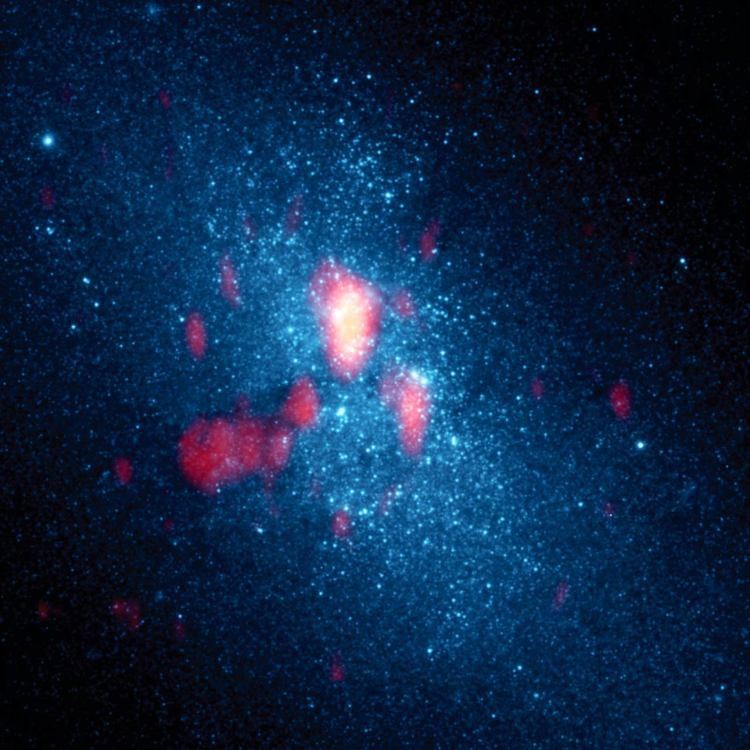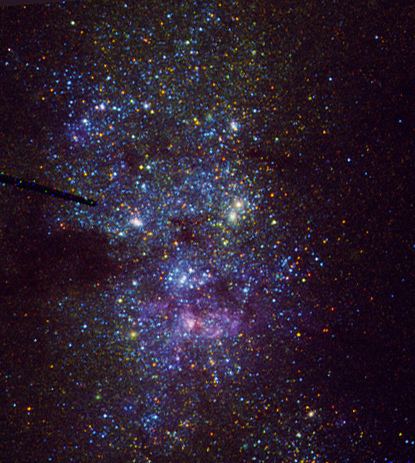Right ascension 13 39 55.9 Redshift 407 ± 3 km/s Apparent size (V) 5′.0 × 1′.9 | Declination −31° 38′ 24″ Type Im pec Magnitude 10.9 Apparent magnitude (V) 10.9 | |
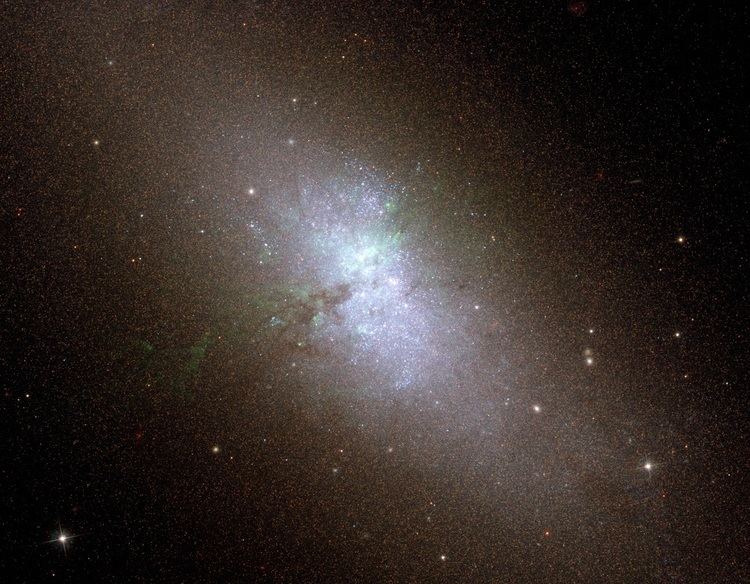 | ||
Distance 10.9 ± 0.6 Mly (3.33 ± 0.17 Mpc) Similar NGC 5102, NGC 4214, Messier 83, Hen 2‑10, NGC 5264 | ||
Zoom al centro de ngc 5253
NGC 5253 is an irregular galaxy in the constellation Centaurus. It was discovered by John Frederick William Herschel on 15 March 1787.
Contents
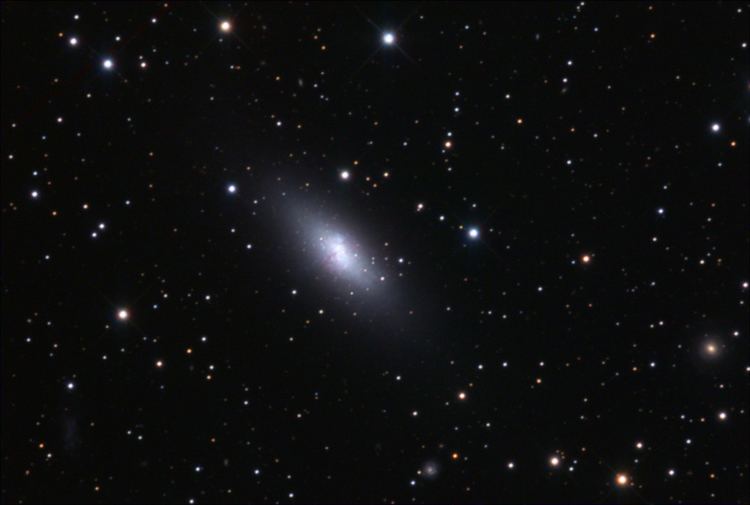
Properties

NGC 5253 is located within the M83 Subgroup of the Centaurus A/M83 Group, a relatively nearby galaxy group that includes the radio galaxy Centaurus A and the spiral galaxy M83 (the Southern Pinwheel Galaxy).
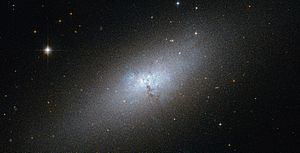
NGC 5253 is considered a dwarf starburst galaxy and also a blue compact galaxy. Supernova 1972E, the second-brightest recent supernova visible from Earth (peak visual magnitude of 8.5, fainter only than SN 1987A in the 20th century), occurred in this galaxy. Another supernova, SN 1895b, also has been recorded in the galaxy.
Contents
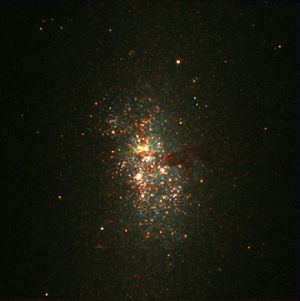
NGC 5352 contains a giant dust cloud, hiding a cluster of more than one million stars, among them up to 7,000 O stars. The super star cluster is 3 million years old and has a total luminosity of more than one billion suns. The amount of dust surrounding the stars is extraordinary — approximately 15,000 times the mass of our sun in elements such as carbon and oxygen. The dust cloud, called Cloud D is also very efficient in creating new stars. How much of a gas cloud gets turned into stars varies in different parts of the universe. In the Milky Way, the rate for gas clouds the size of Cloud D is less than 5 percent. In Cloud D, the rate is at least 10 times higher, and perhaps much more. In coming years, the cloud could be destroyed by stars that become supernovae, which would spin all of the gas and elements created by the stars into interstellar space.
